[ad_1]
One by one, kids toss notecards into the flames, every one bearing the identify of a liked one misplaced to suicide: fathers, moms, brothers, sisters. Every card makes the fireplace burn a bit brighter, a burst of sunshine and reminiscence because the paper singes and crumples. When every little one has had their flip, they embrace in a gaggle hug—some crying, some smiling, collectively in each grief and therapeutic.
Tomorrow, the 72 kids, teenagers, and younger adults attending Consolation Zone Camp’s three-day suicide-bereavement camp in rural New Jersey, in addition to the mother and father who accompanied them and the “massive buddies” with whom the children are paired, will pack up and return residence. The hope is that they’ll depart feeling emotionally lighter than after they arrived, says Lynne Hughes, who based Consolation Zone Camp greater than 20 years in the past to provide grieving kids a spot to open up and heal from their losses.
“In case you by no means inform your story, grief doesn’t go anyplace; it simply hangs out in your shoulder with you,” Hughes says. “In case you inform your story, it de-powers it. You’re going towards it. Mourning is the intentional act of going towards the grief.”

Clockwise from prime left: “Large buddies” Liv Burnett and Ceara Olsen, and campers Fiona Karlson, Morgan Chiantella, Marlee Schindler, and Avalon Chassé on the final day of Consolation Zone Camp.
Ilona Szwarc for TIME
“Mourning is the intentional act of going towards the grief,” says Consolation Zone Camp founder Lynne Hughes.
Ilona Szwarc for TIME
Consolation Zone Camp senior regional director Krista Collopy says goodbye to camper Hannah Mills on the final day.
Ilona Szwarc for TIME
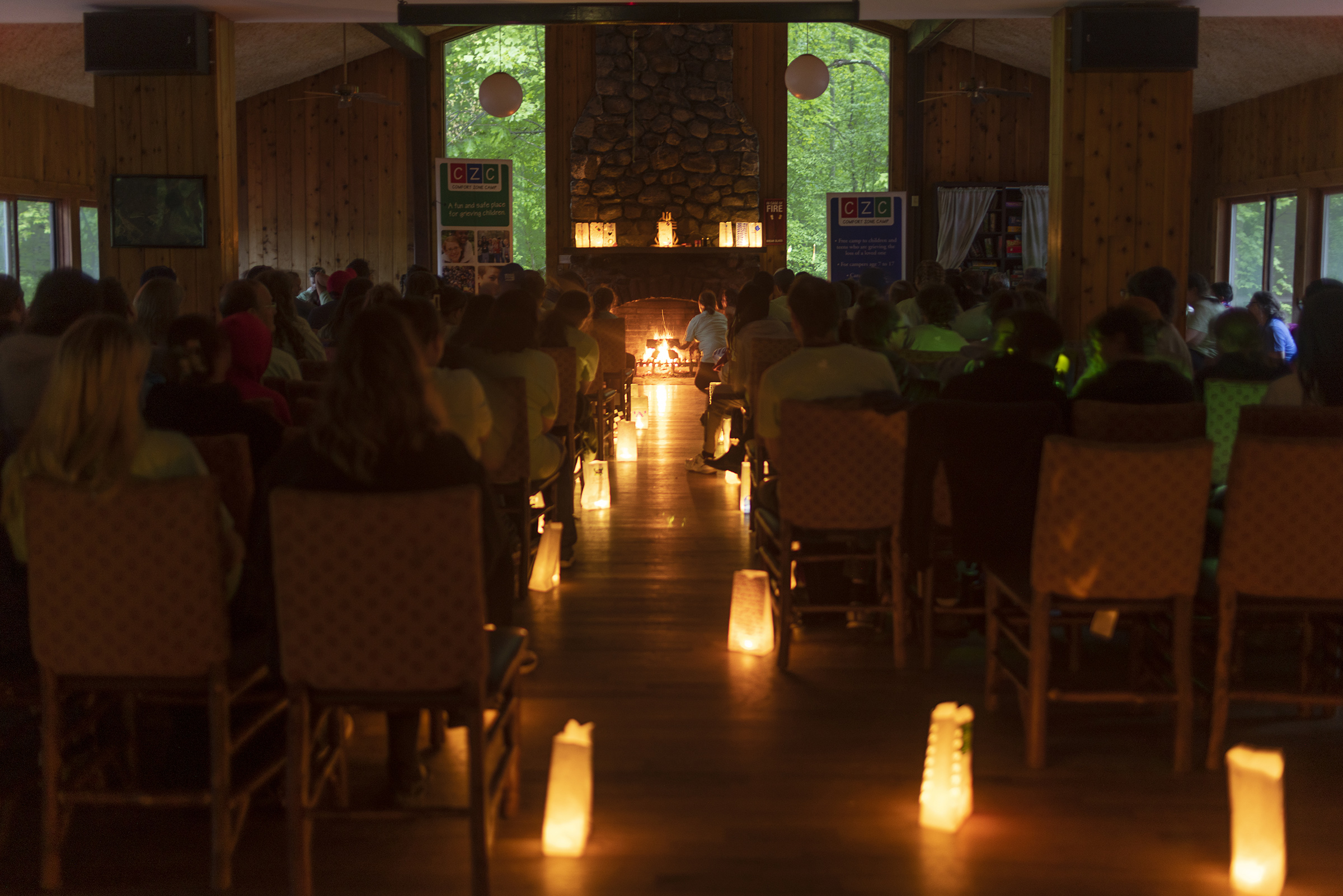
Campers, buddies, and employees collect for a memorial ceremony.
Ilona Szwarc for TIME
Hughes didn’t begin her group particularly to assist folks coping with suicide loss; it additionally presents free bereavement camps for youths who’ve misplaced family members to any trigger. However the want for suicide-specific help has grown at each Consolation Zone Camp and within the wider community of U.S. bereavement camps lately. Attendance at Consolation Zone Camp’s suicide-bereavement camp rose by about 50% from 2022 to 2023.
That rising demand coincides with rising U.S. suicide charges, which elevated by about 37% from 2000 to 2021. Nearly 50,000 folks within the U.S. died by suicide in 2021, forsaking a devastating a number of of grieving family members—a lot of them kids. The bereavement-support group Judi’s Home estimates that greater than 450,000 U.S. kids will lose a father or mother to suicide by the point they flip 18.
Brief sleepaway camps have emerged as a singular solution to help kids and households grieving these losses. Out within the woods, campers can inform their tales, bond with individuals who perceive their ache, and really feel like children once more by actions like boating, crafts, archery, and roasting marshmallows.
“You make lifelong friendships at camp since you meet any person that doesn’t precisely know what you’re going by, however they’ve been by it otherwise,” says Tess Wenger, 15, who began attending Consolation Zone Camp after her then-11-year-old sister died by suicide. “You are feeling as if you possibly can speak to any person about it and also you gained’t really feel judged like within the ‘regular,’ outdoors world.”
“No person feels comfy [talking] about suicide and loss after which how messy it’s grieving it,” says camper Tess Wenger.
Ilona Szwarc for TIME
“She was a really candy particular person. She was very selfless. She would go fully out of her solution to do one thing for any person else,” Tess says of her sister Elena, who died by suicide in 2016.
Ilona Szwarc for TIME
Some individuals who balk at conventional speak remedy discover it simpler to open up throughout actions like nature walks, yoga courses, and bonfires—notably with the data that they’re round individuals who intimately perceive what they’re going by, says Kaitlin Daeges, volunteer govt director on the Livin Basis, which established a suicide-bereavement camp in Minnesota in 2019. Bereavement camps, which are usually free, may additionally be extra accessible than conventional mental-health care.
Bridie Croucher struggled to discover a therapist with instant availability for her 10-year-old son, Oscar, after he began asking questions on his father’s dying by suicide, which occurred when the boy was two-and-a-half. Dealing with a six-month-long waitlist for care, she enrolled him in Consolation Zone’s suicide-loss camp “to assist bridge that hole,” and says she’s since seen an enormous distinction in his skill to course of and cope together with his emotions.
Sydney, Morgan, and Isaiah Mosher know first-hand how essential it’s to supply children a spot to heal after they want one. Their father died by suicide after they had been youngsters. The household barely talked about their loss, Sydney says, which solely extended the ache—in order adults, she and her siblings determined to open Camp Kita, a free suicide-bereavement camp in Maine.
Camp Kita hosted 5 campers in its first season 10 years in the past; this 12 months, it needed to cap enrollment at 75 and restrict the waitlist. Demand is so excessive that the founders are elevating cash to assemble everlasting campgrounds. They hope to supply year-round programming, together with a number of camp periods; retreats for teams at elevated threat of suicide, akin to veteran households and LGBTQ+ youth; mental-health trainings; nature-therapy applications; and extra.
Daeges, whose father died by suicide when she was 12, says rising demand for these providers underscores their twin functions: to serve households who’re already a part of the “unlucky membership” of suicide bereavement, and to forestall others from becoming a member of it. “Camp is each reactive and preventive on the identical time,” Daeges says. “We’re making an attempt to help these households and the folks left behind…in order that they don’t get to the identical place.”
Camper Saanvi Kulkarni, left, together with her buddy Kelly Nilsen in entrance of the gymnasium.
Ilona Szwarc for TIME
Campers write notes for the memorial ceremony.
Ilona Szwarc for TIME
A camper writes on a balloon throughout a healing-circle train.
Ilona Szwarc for TIME
Camper Finn Williams, left, together with his buddy Jake Mailloux.
Ilona Szwarc for TIME
Camps may also assist handle the “distinctive nuances” of suicide grief, Hughes says. Family members usually blame themselves, feeling as if they may have intervened in the event that they’d picked up on sure clues or been in the fitting place on the proper time. They might even have skilled particular traumas, like discovering their liked one’s physique or studying a suicide observe they left behind. Many individuals who die by suicide have additionally beforehand handled substance use and mental-health issues, which might affect the reminiscences their family members carry.
Analysis reveals that individuals are at better threat of suicidal habits after somebody they know dies by suicide. Kids who lose a father or mother to suicide are additionally inclined to growing suicidal habits and psychiatric issues, analysis suggests.
Though way more adults than kids die by suicide, charges of psychological misery and suicidal considering are on the rise amongst younger folks. As of 2021, greater than 40% of highschool college students mentioned they felt unhappy or hopeless; 30% of sweet sixteen ladies and 14% of sweet sixteen boys had severely thought of suicide; and 13% of sweet sixteen ladies and seven% of sweet sixteen boys had tried suicide, federal knowledge present. Given these alarming statistics, it’s notably essential to help younger individuals who could also be at elevated threat of self-harm or suicide, akin to those that have skilled the dying of a father or mother, sibling, or buddy.
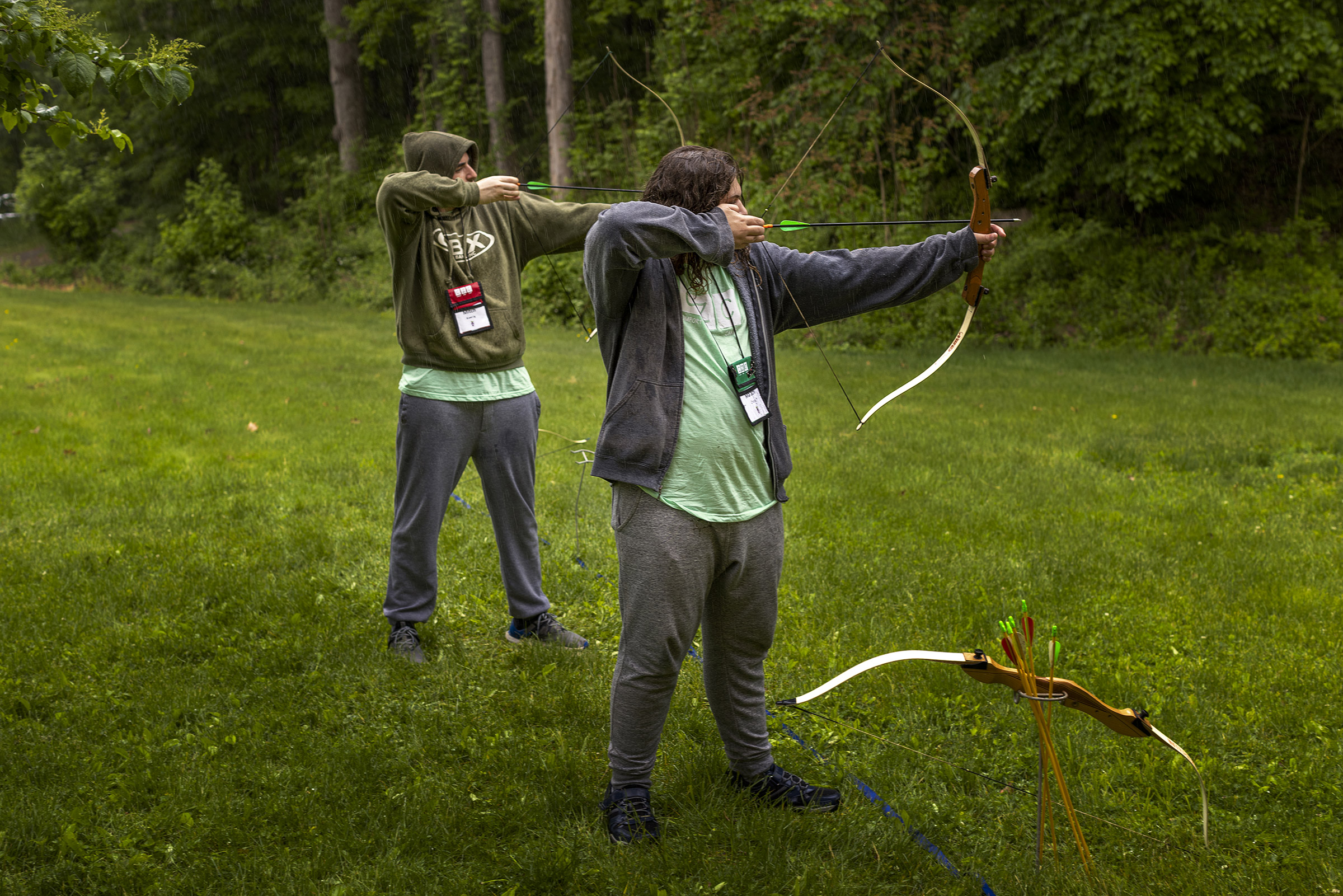
“You may speak with none fears” in camp therapeutic circles, says camper Malachi Chassé, proper. “You may share. Everybody’s going to grasp.”
Ilona Szwarc for TIME
Campers and buddies assist camper Reille Heil on an impediment course.
Ilona Szwarc for TIME
Campers make shadow puppets in the course of the bonfire.
Ilona Szwarc for TIME
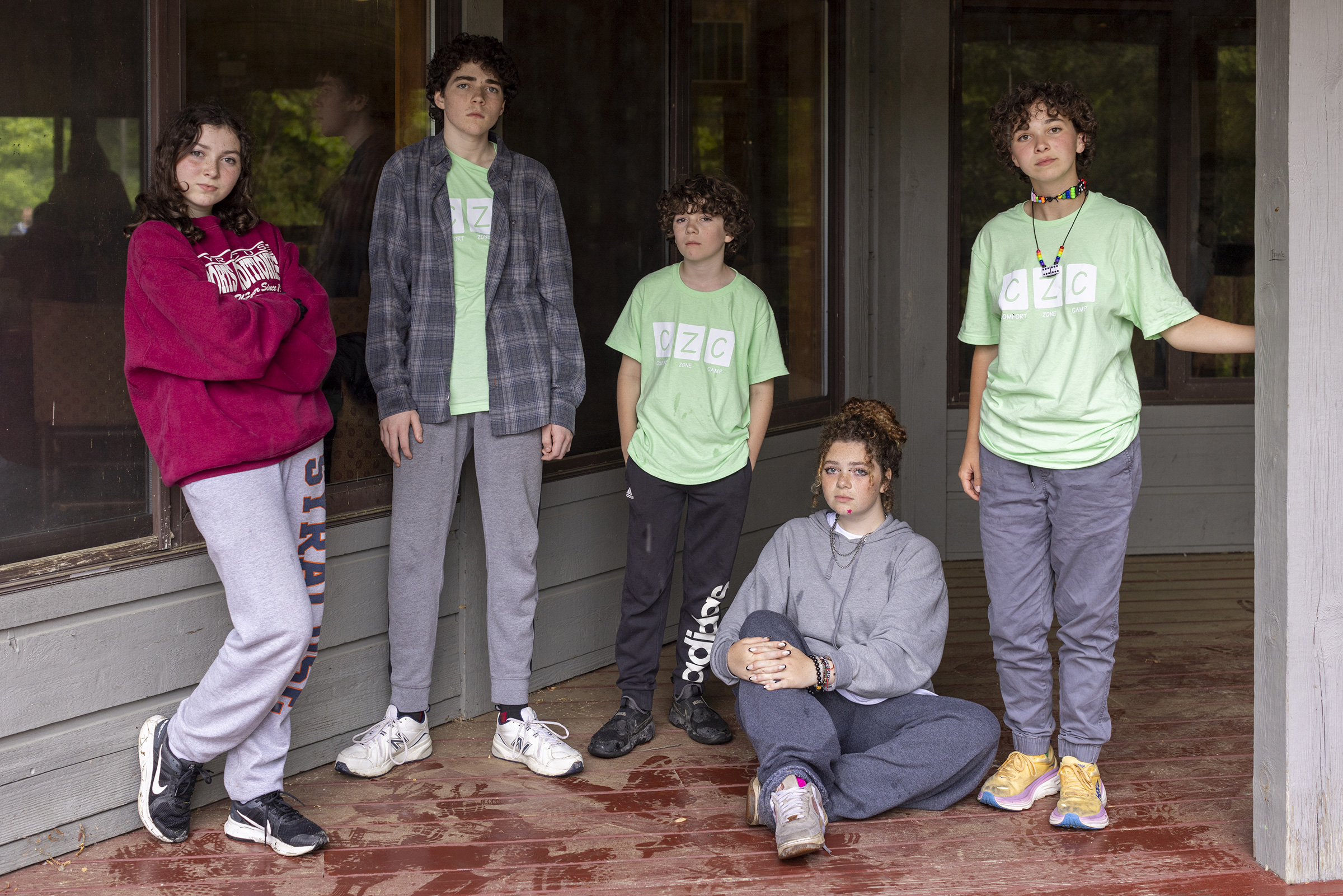
From left: Siblings Ayden (Poppy), Caleb, Nathaniel, Rory, and Morgan Sumner misplaced their dad to suicide.
Ilona Szwarc for TIME
Suicide bereavement isn’t like different kinds of grief. It’s a type of “disenfranchised grief,” or grief that, as a result of social stigma, “isn’t absolutely embraced and welcomed by society,” says Sarah Behm, who works with the Eluna Community, a nonprofit that helps grieving kids and households and runs Camp Erin, a nationwide community of bereavement camps. This stigma could make it tough for folks to brazenly grieve these they misplaced, usually inflicting them to attract inward as a substitute. Bereavement camps create secure areas the place folks can freely focus on their losses with out judgment, Behm says.
That energy is on full show at Consolation Zone Camp, the place campers share their tales in age-group-specific “therapeutic circles” to counter the hushed tones with which individuals often speak about suicide, Hughes says. To start out the circle, campers alternate pins to acknowledge what they recognize and respect about each other. Then, campers volunteer to inform their tales.
“[I learned] it is okay to love him and hate him on the identical time. I did not know that earlier than,” says camper Oscar Mercogliano.
Ilona Szwarc for TIME
Oscar misplaced his dad Paolo to suicide when he was two-and-a-half.
Ilona Szwarc for TIME
Passing round a stress ball to mark whose flip it’s to share, some campers communicate eloquently—it’s clear they’ve instructed their tales earlier than—whereas others stammer as they describe tough particulars aloud for the primary time. Their friends pay attention quietly, then ask questions on their grief journey and the deceased. Who had been they as an individual? What was their favourite shade? What’s your favourite reminiscence with them? Is there something particular you do on their dying date? What brings you consolation if you’re feeling unhappy? The solutions aren’t simply therapeutic for the speaker; sharing these lived experiences exposes everybody within the circle to new coping mechanisms.
“You may speak with none fears” in these therapeutic circles, says 16-year-old Malachi Chassé, who attends Consolation Zone Camp to assist cope together with his father’s dying by suicide and his child brother’s unintentional dying. “You may share. Everybody’s going to grasp.”
Even outdoors therapeutic circles, throughout actions which are ostensibly only for enjoyable, there’s an undercurrent of neighborhood and therapeutic. As campers clamber by an impediment course, Hughes asks how the expertise is like grief.
“Some sections take longer than others,” replies one camper.
“You get down,” provides one other, “and get again up.”
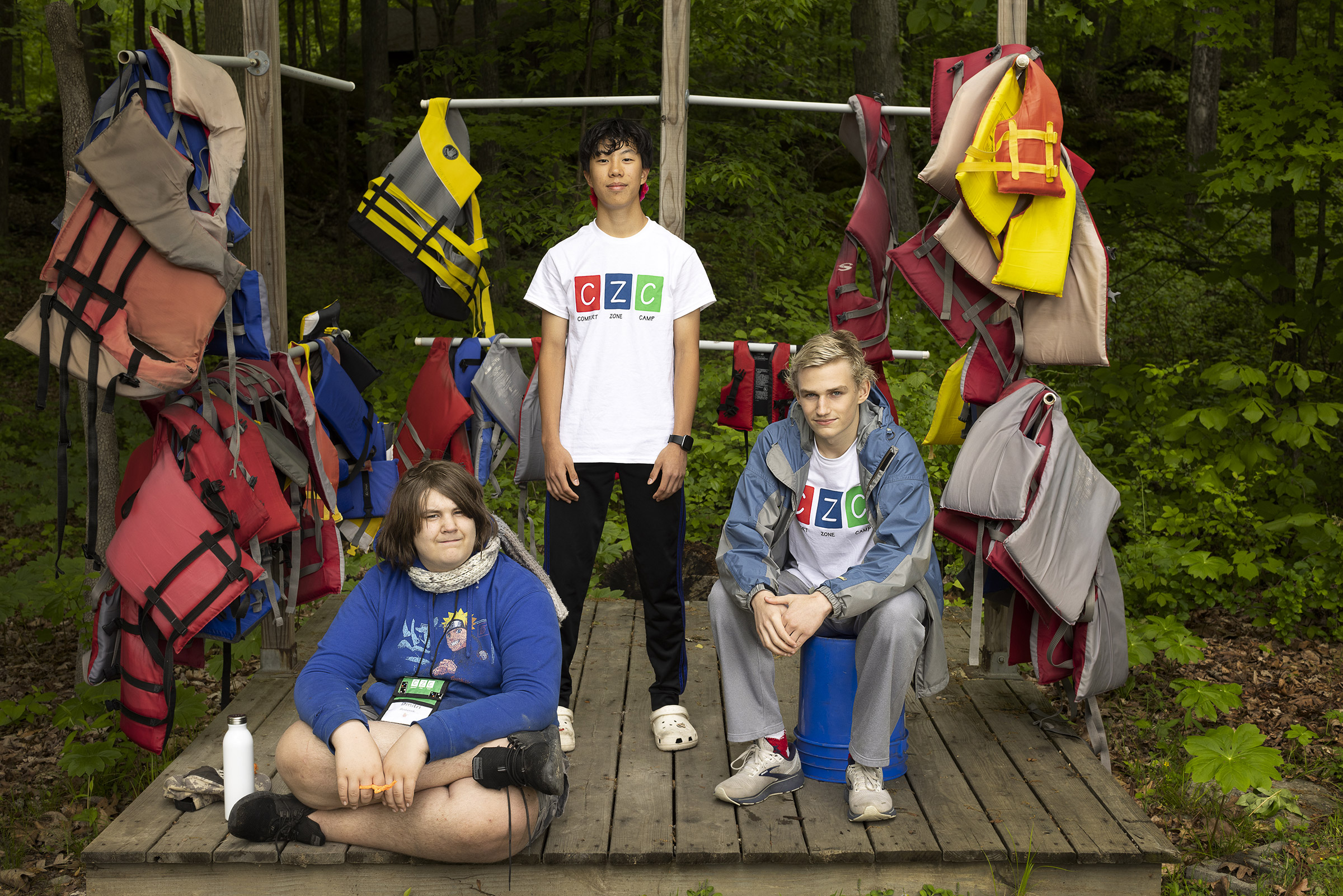
From left: Campers Dmitri Antonik, Jacob Mui, and Daniel Uribe close to the lake.
Ilona Szwarc for TIME
A tree on an impediment course.
Ilona Szwarc for TIME
“They not solely helped me discover coping mechanisms and expertise, they gave me folks to speak to who had been like me and had been my age. And it actually simply helped put issues into perspective. It was recreation altering,” says camper Addison Aquilino.
Ilona Szwarc for TIME
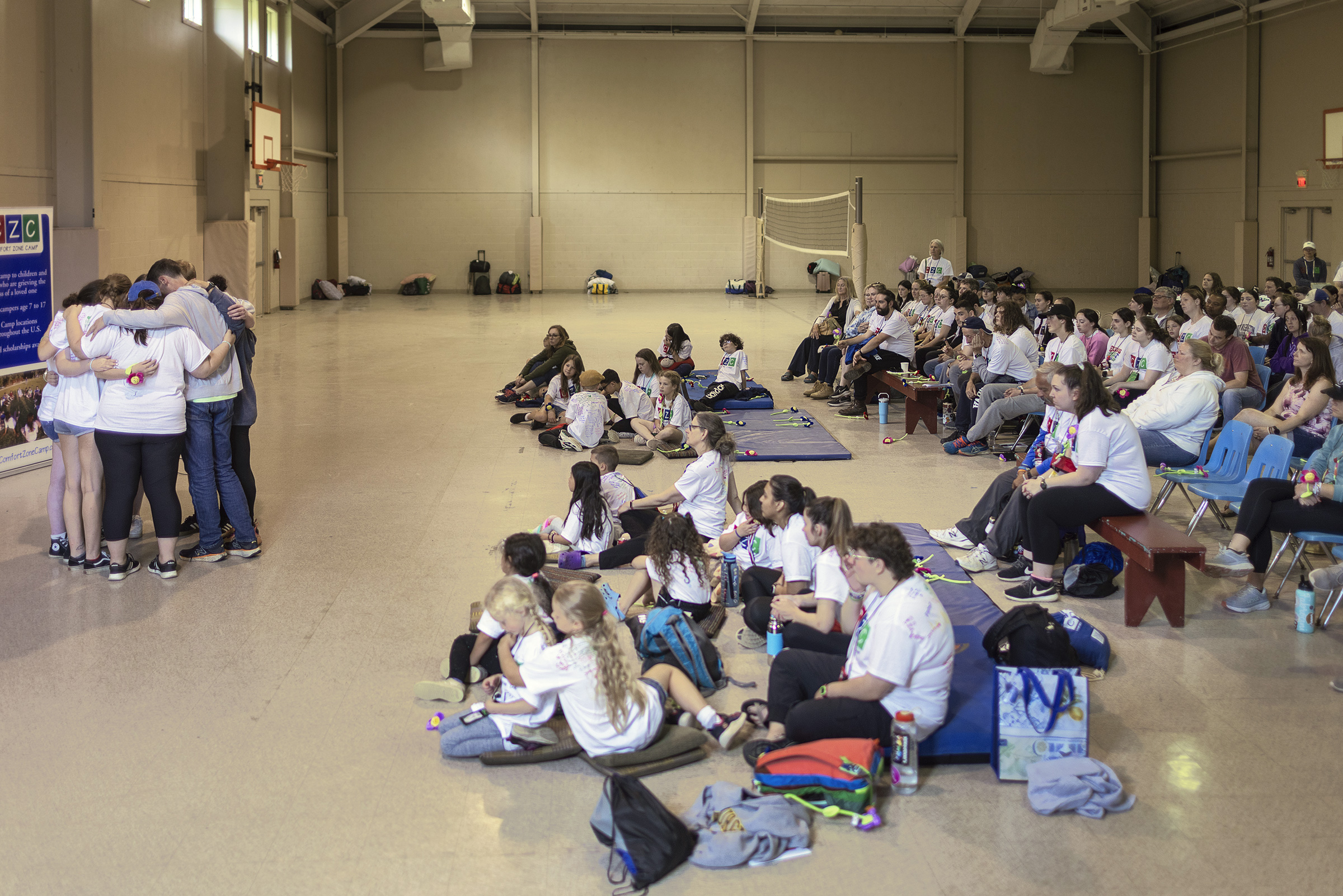
Members of a therapeutic circle embrace after sharing who they’re honoring on the last memorial service.
Ilona Szwarc
In case you or somebody you already know could also be experiencing a mental-health disaster or considering suicide, name or textual content 988. In emergencies, name 911, or search care from an area hospital or psychological well being supplier.
Extra Should-Reads From TIME
[ad_2]







































Discussion about this post